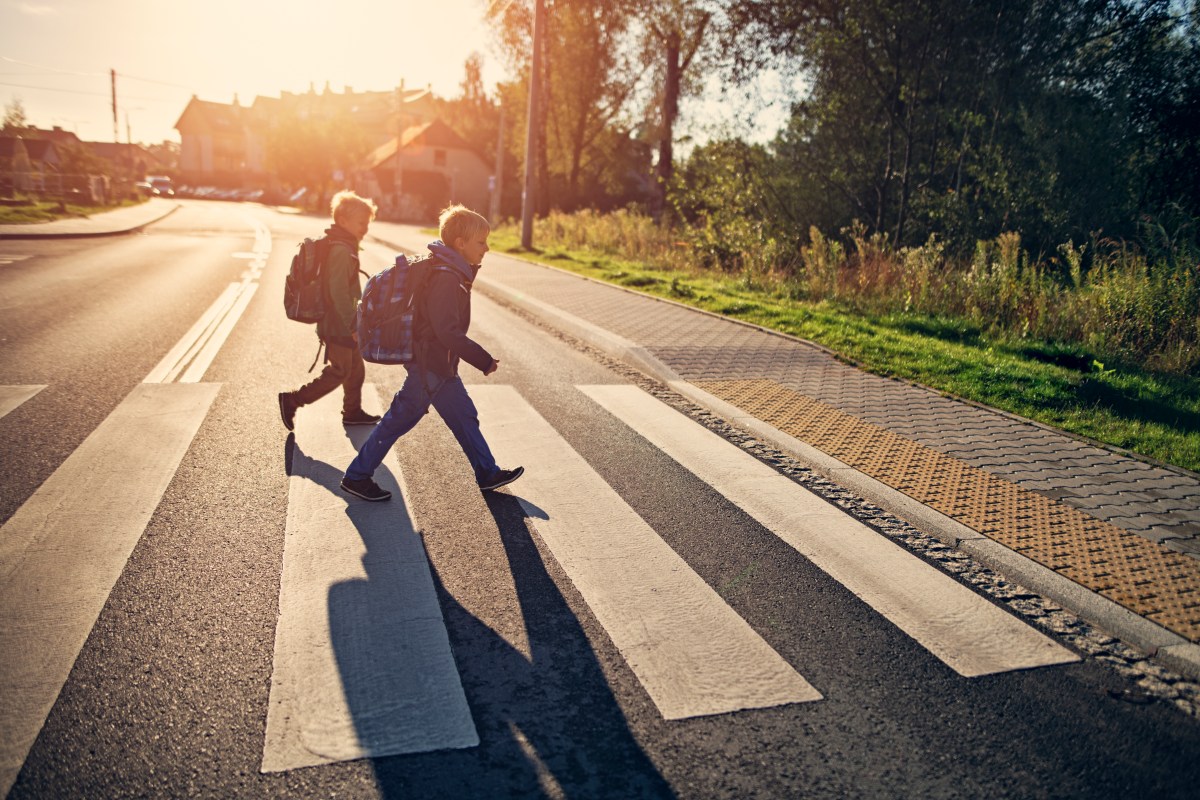“Back in my day, we walked to school uphill, both ways…in the snow!”
It’s a familiar pronouncement from senior citizens eager to illustrate the bleakness of their childhoods, and it’s one that younger generations have learned to take with a grain of salt. After all, older generations have been calling today’s kids “soft” (and criticizing the circulation of “participation trophies”) for over 100 years. Give it a rest, Grandpa Abe.
But elevation change and precipitation aside, older Americans did indeed walk to school more consistently than today’s young Americans. The data backs up the trite claims. In 1969, half of American children between the ages of 5 and 14 walked or biked to school. But in 2011, just 13% of that demographic was walking or biking to school, and according to the latest reports from the National Household Travel Survey, that number is now down to 11%.
The decades-long drop-off in what experts call “active commuting” has compounded a sedentary crisis among American children. Today’s kids were already trending inactive, but wrenches like social media, the pandemic and a shrinking interest in youth sports have kept them on their butts seemingly around the clock. Studies suggest that a simple walk or cycle to or from school could help them retain an active lifestyle, though, and at the very least help them ward off the threat of obesity in adolescence. (One in five Americans between the ages of 12 and 19 is considered obese.)
According to a study published earlier this year in Preventive Medicine Reports, children are highly likely to keep active commuting traditions going if walking or cycling to school was emphasized earlier in life. Sourcing school travel data from hundreds of families in four New Jersey cities, the researchers found that 75% of children who were actively commuting at the “baseline” of data collection were still doing so at the follow-ups, two to four years later. By contrast, it was extremely rare for a child who’d never walked to school to have a change of heart in the intervening years.
The disparity between walkers and non-walkers isn’t a point of laziness, though. Those who regularly actively commute to school (in whatever era) tend to have some sort of logistical advantage, while others are dealing with a barrier like distance, danger, traffic or weather. Plus, as towns have expanded and schools have welcomed regional attendees, living within a mile of school has become less common, and more expensive — especially so for younger families. The real estate around schools, where streets are well-serviced, may well stay in the hands of adults who haven’t sent kids to those schools in decades.
Active commuting takes a hit as kids age, even if they have no qualms with moving themselves around town. With each school promotion, the school’s population becomes more scattered (in my hometown, for instance, there were six elementary schools, which funneled into two middle schools, which funneled into one high school…which wasn’t particularly close to the “zones” of three of those elementary schools). Kids also start to associate a sense of freedom and status with driver’s licenses, while cycling doesn’t seem to be particularly popular these days.
At the end of the day, though, it’s silly to expect children to make these decisions on their own. Parents should gently nudge them to prioritize an active commuting lifestyle. Walk with them to school when they’re quite young; look into safe “remote drop-offs” when they’re older and school is a little further away, so they can still get some walking in; encourage a buddy system with peers in the neighborhood; buy them a bike if the distance really is nothing to sneeze at. And while it may seem sensible to keep children from having to cross busy intersections…the intersections only get busier when every adult feels that way. Another commuting kid means one less commuting car.
Bragging about your school travel misadventures during the Ford Administration might make you feel good, but it does little to inspire the youth of today to live happier, healthier lives.
The Charge will help you move better, think clearer and stay in the game longer. Subscribe to our wellness newsletter today.


















